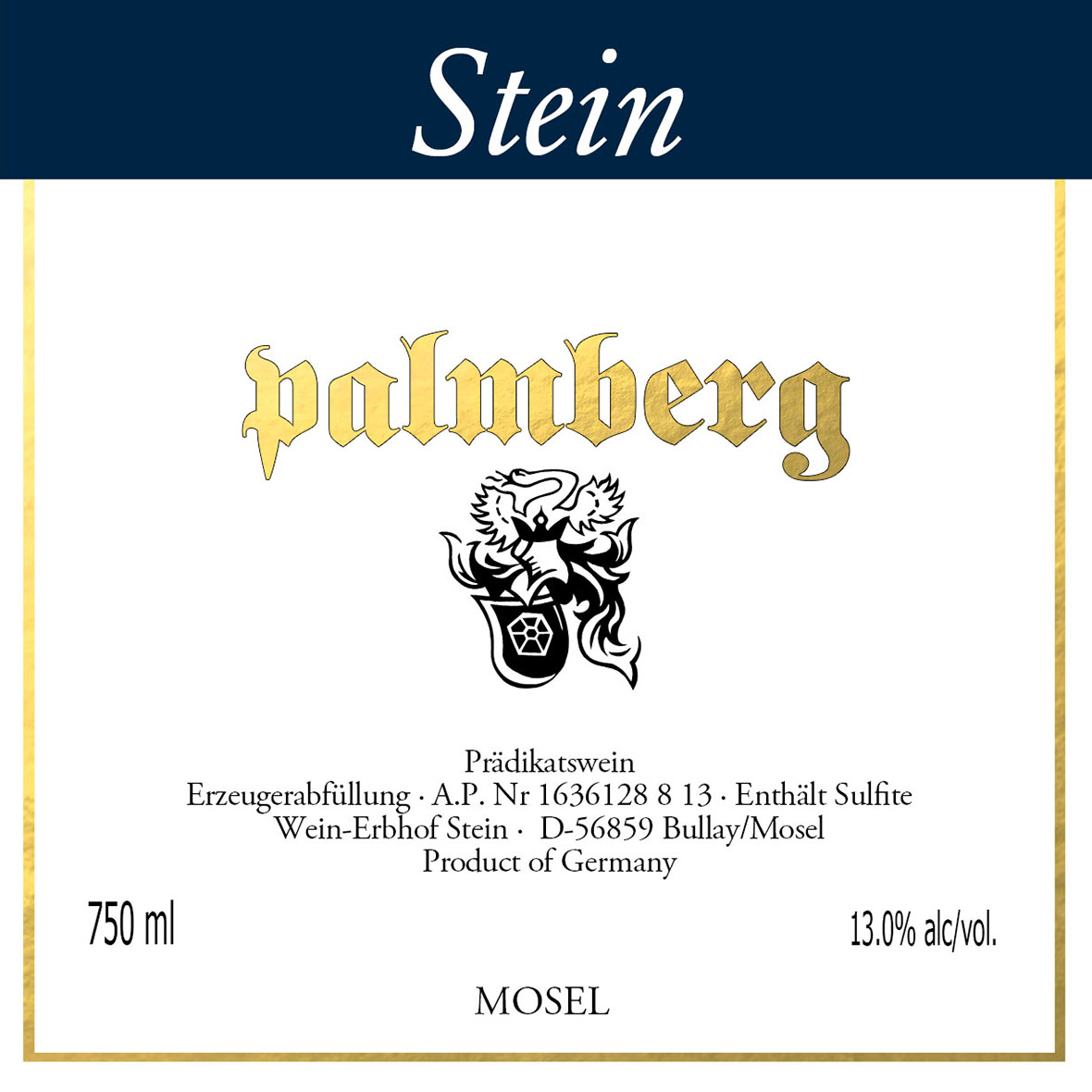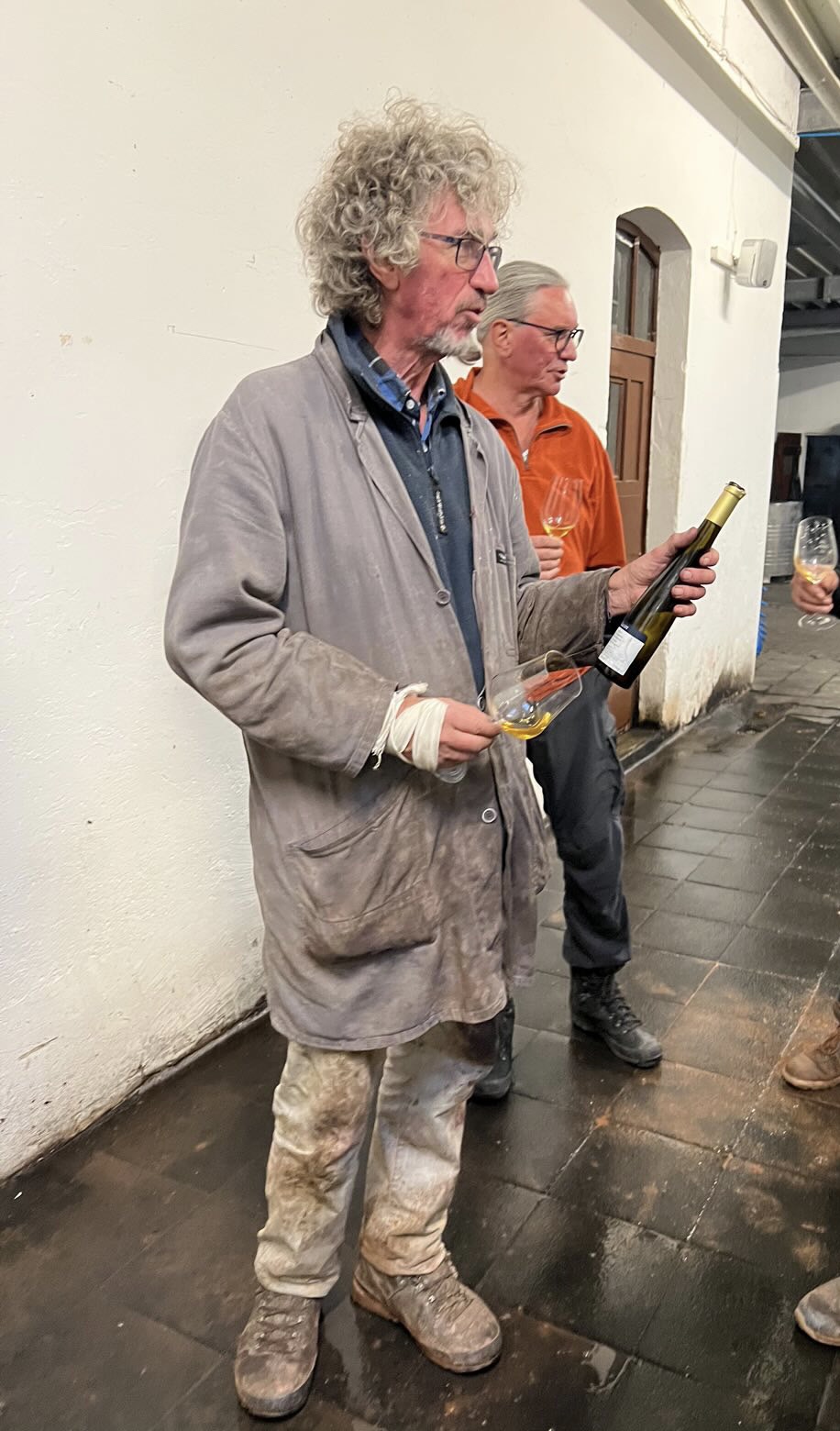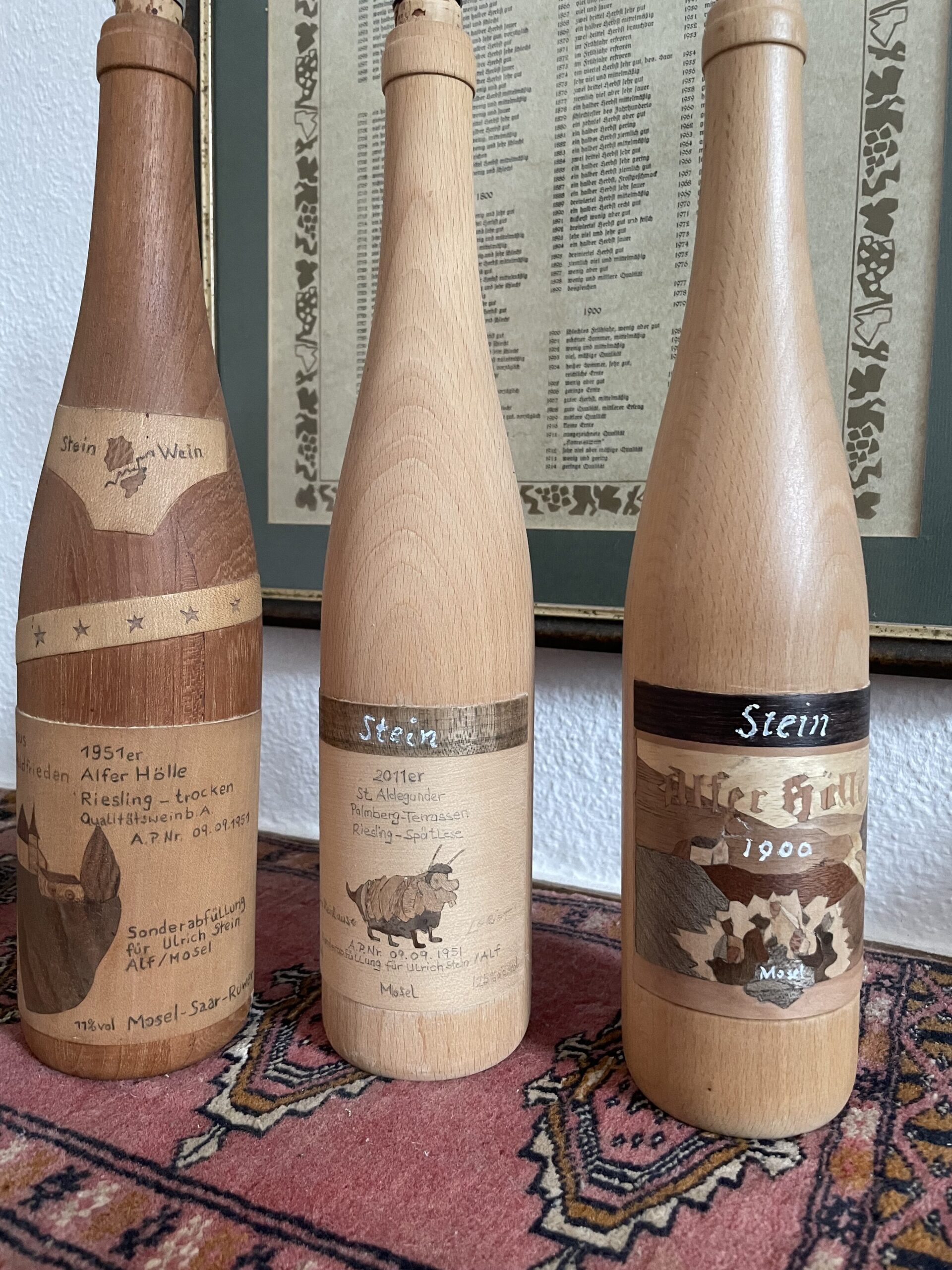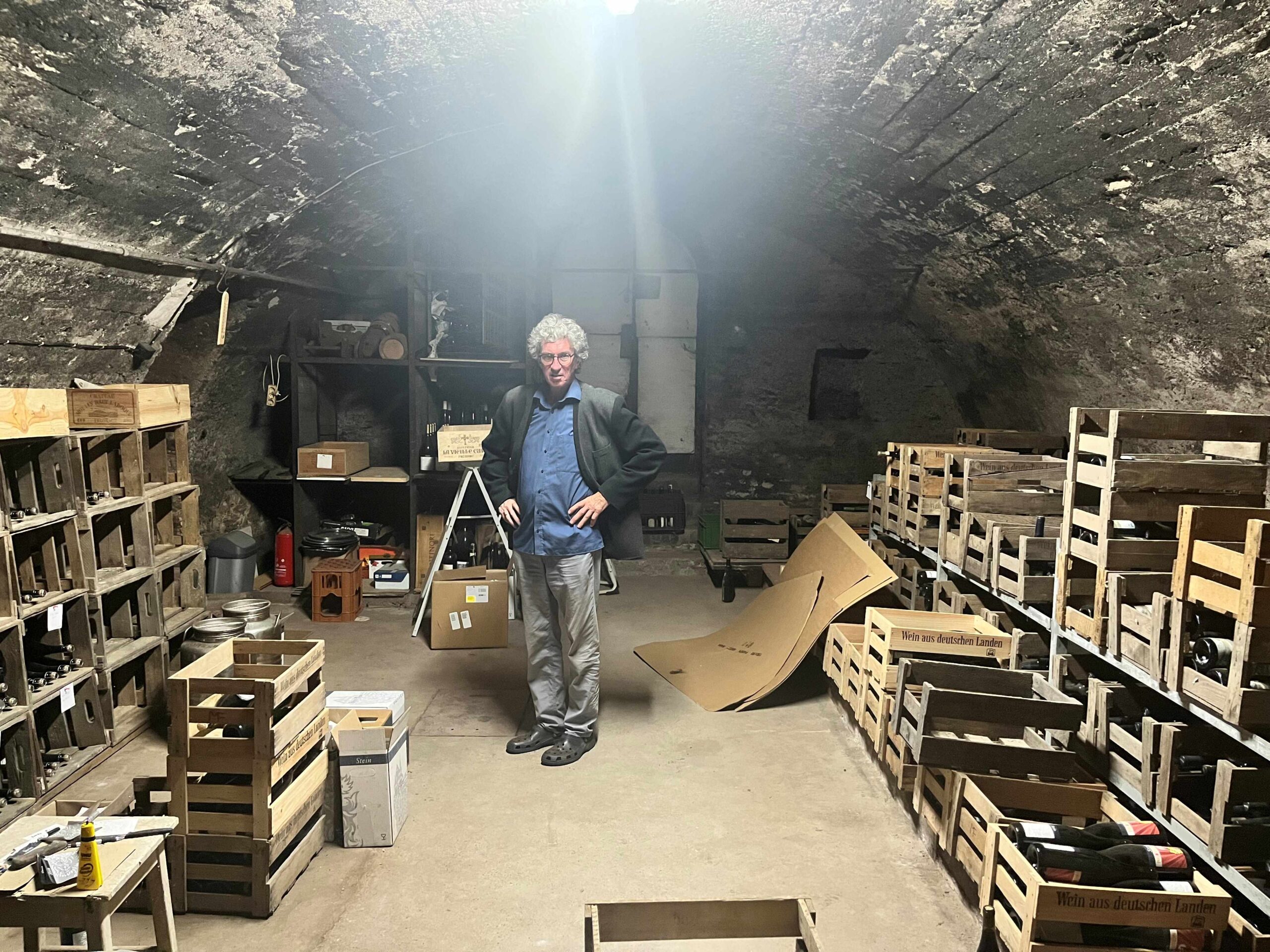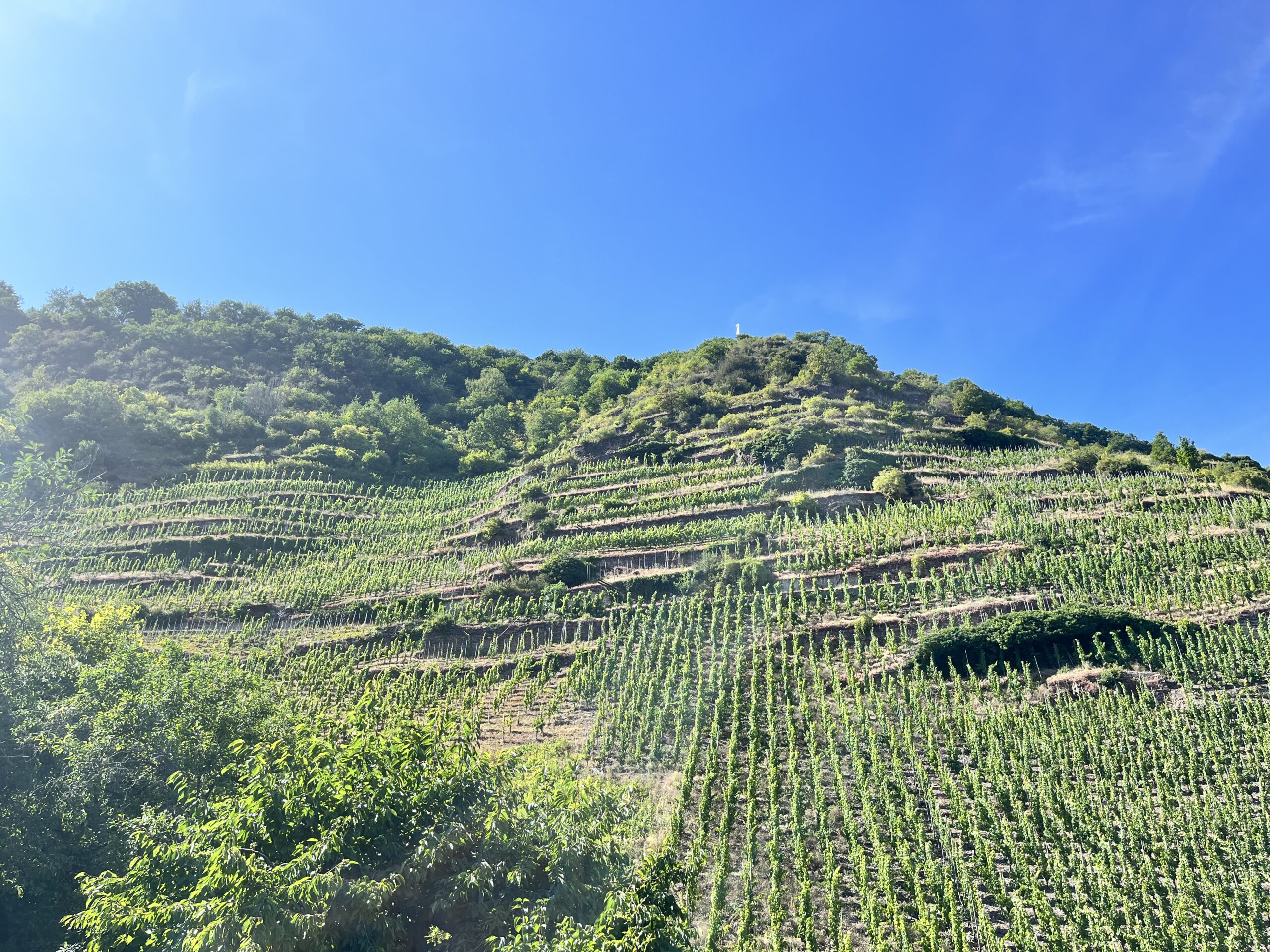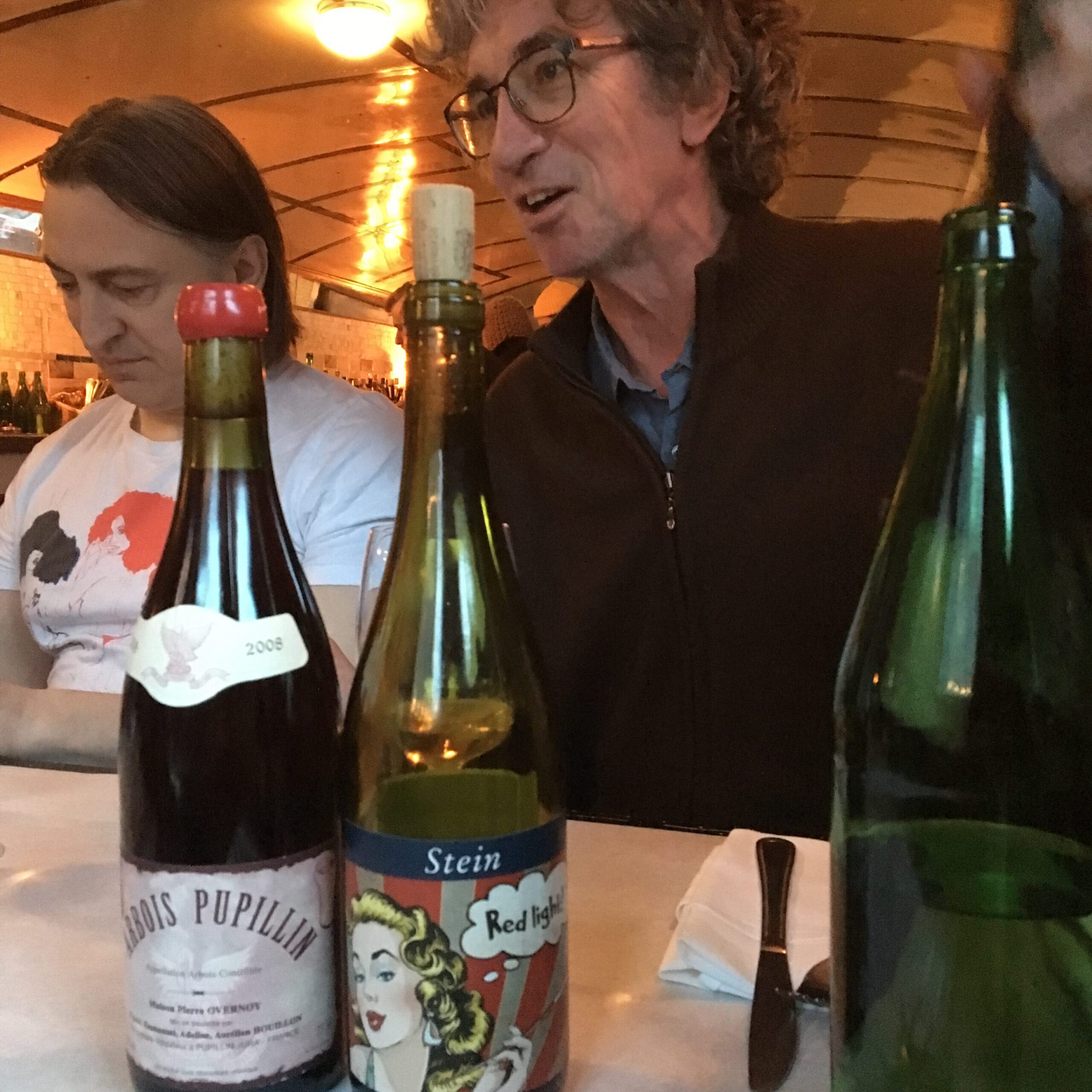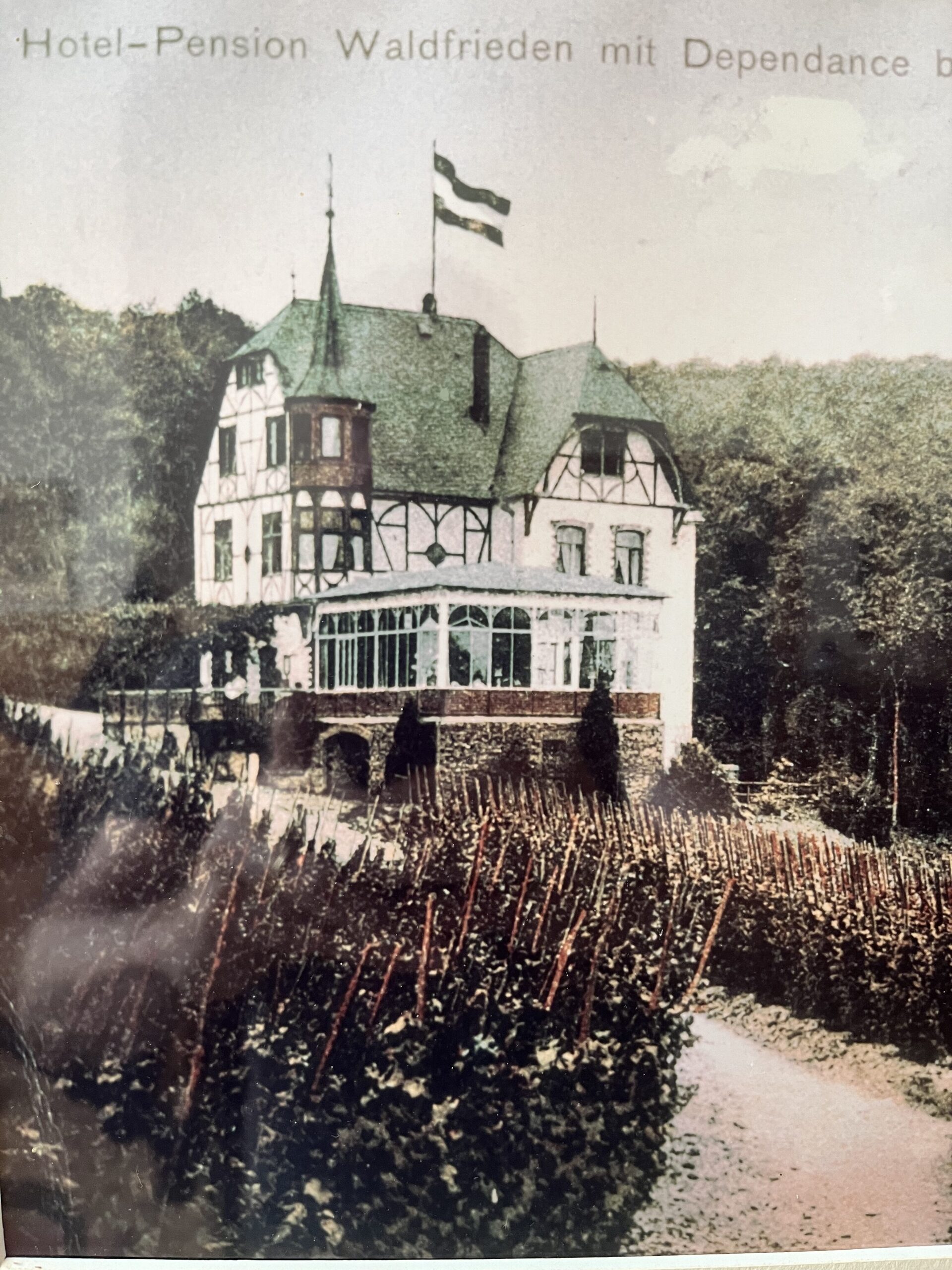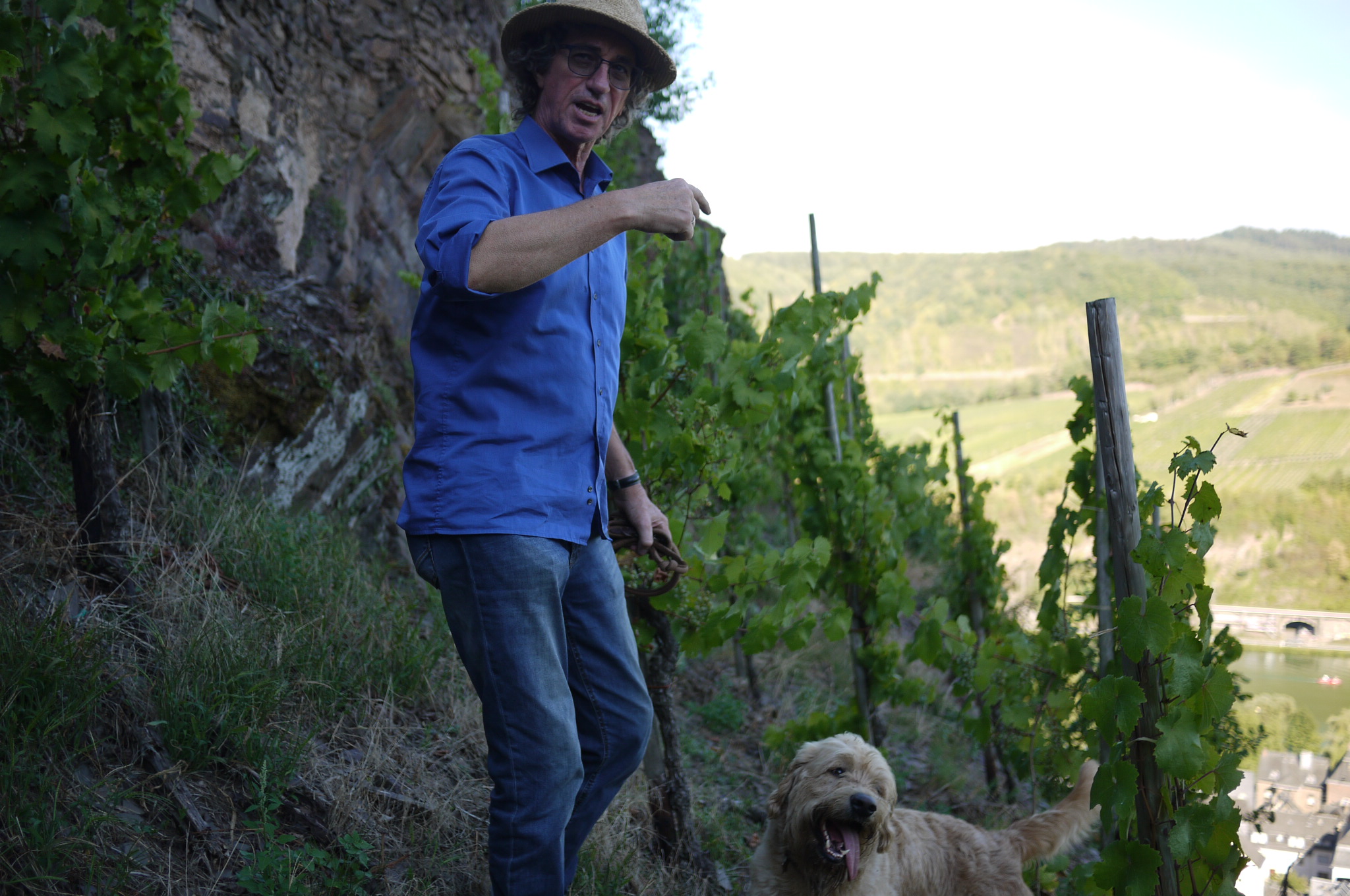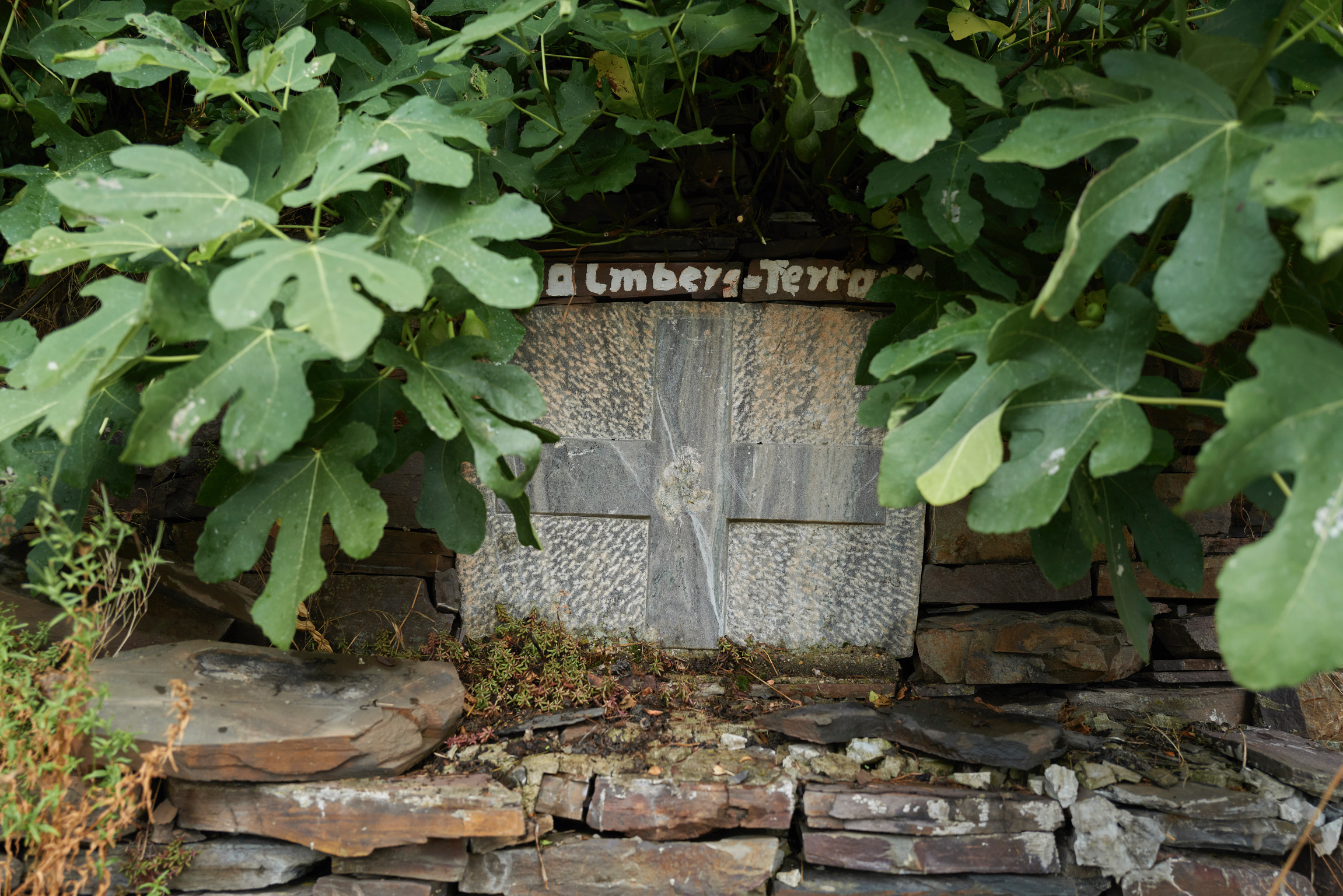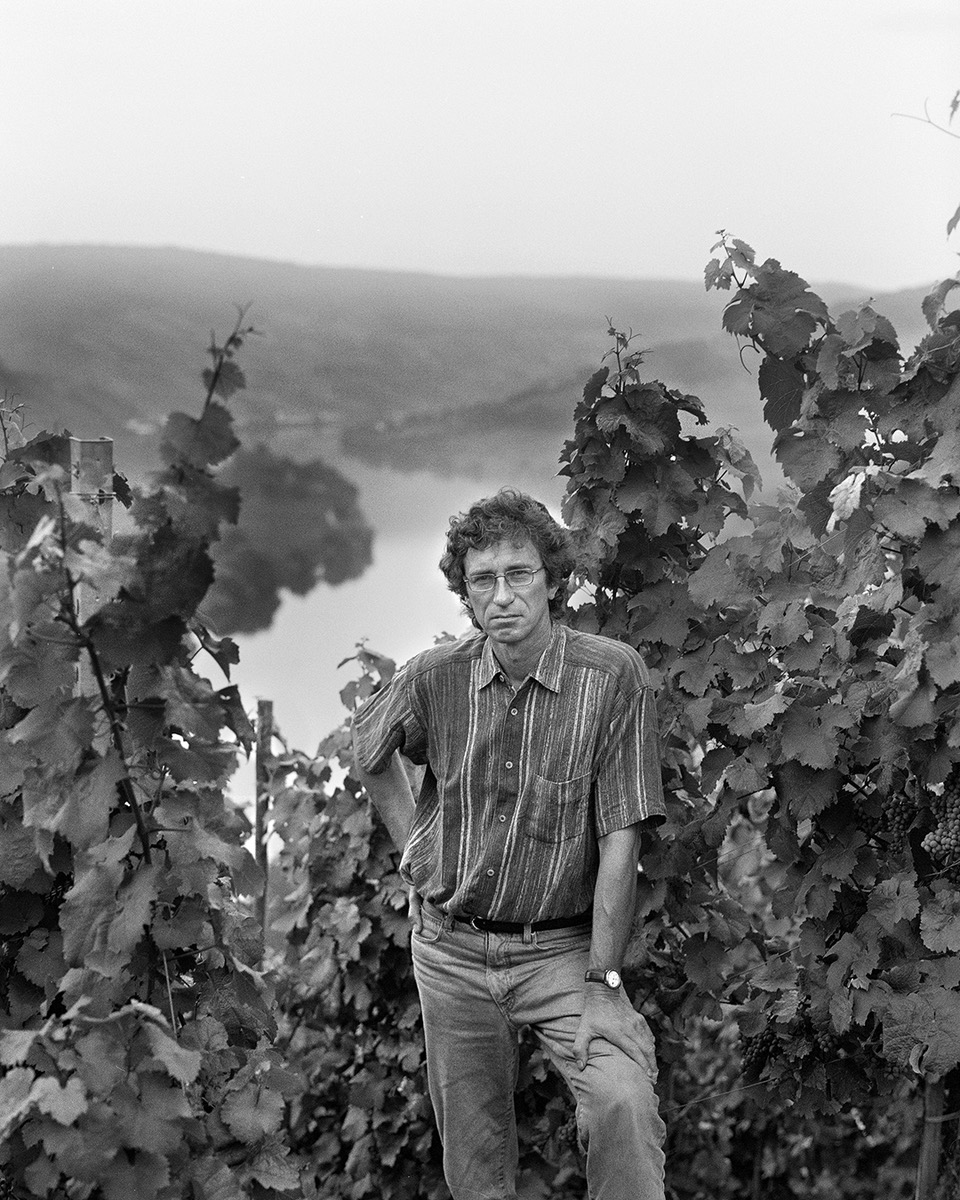“Dr. Ulrich Stein is infamous for such lost causes as the reclamation of abandoned, frighteningly steep sites; and battling the entrenched 1971 German Wine Law. It seems, though, that he is more a David than a Don Quixote, because he has won them all.” – David Schildknecht, The Wine Advocate
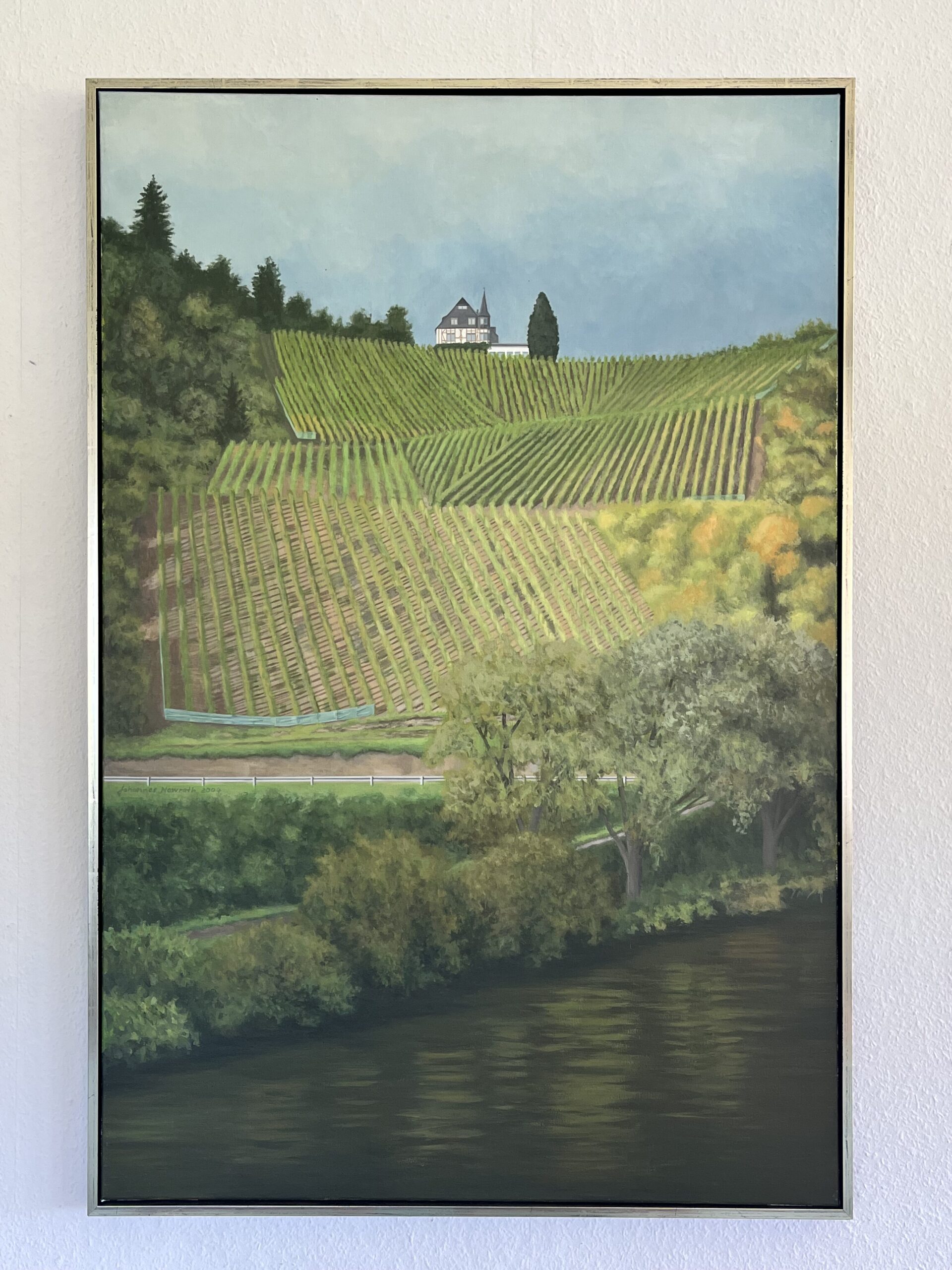
No one – NO ONE – has met Dr. Ulrich Stein ( “Ulli”) without at least developing a slight crush on the guy. He is brilliant, passionate, incredibly fun, perhaps a bit manic and does nothing… nothing, that is easy or obvious.
Ulli is a true bohemian who lives in a beautiful 19th century inn – Haus Waldfrieden, photographed to the right from an old postcard – on the top of a mountain overlooking the Mosel. Ulli owns the inn; it is his home. While the inn doesn’t really function as an inn (you can’t actually book rooms there, unless you’re a friend) it is always filled with people, with a random assortment of thoughtful eccentrics, famous musicians and artists, a couple just back from photographing Jewish delis in New York, a family making a month-long sojourn from Berlin down to Sicily and back. The common thread? They all love Stein wine; they all love Ulli.
In my first profile of Stein, from ten years ago, I wrote the following line, which is fascinating as a document of a time since past: “Ulli’s wines are not widely known in the U.S.”
The fact that now, a decade later, Stein’s wines have never been more coveted and appreciated, is deeply rewarding to us. After a half-century of producing unflinchingly mineral wines, Ulli deserves the touch of stardom he is now receiving. Like Hofgut Falkenstein, another grower that consistently championed ruthlessly dry wines when the only avenue of commercial success seemed to be to make wines with a bit more schmalz and sugar, Stein has gone from near-total obscurity to some degree of fame.
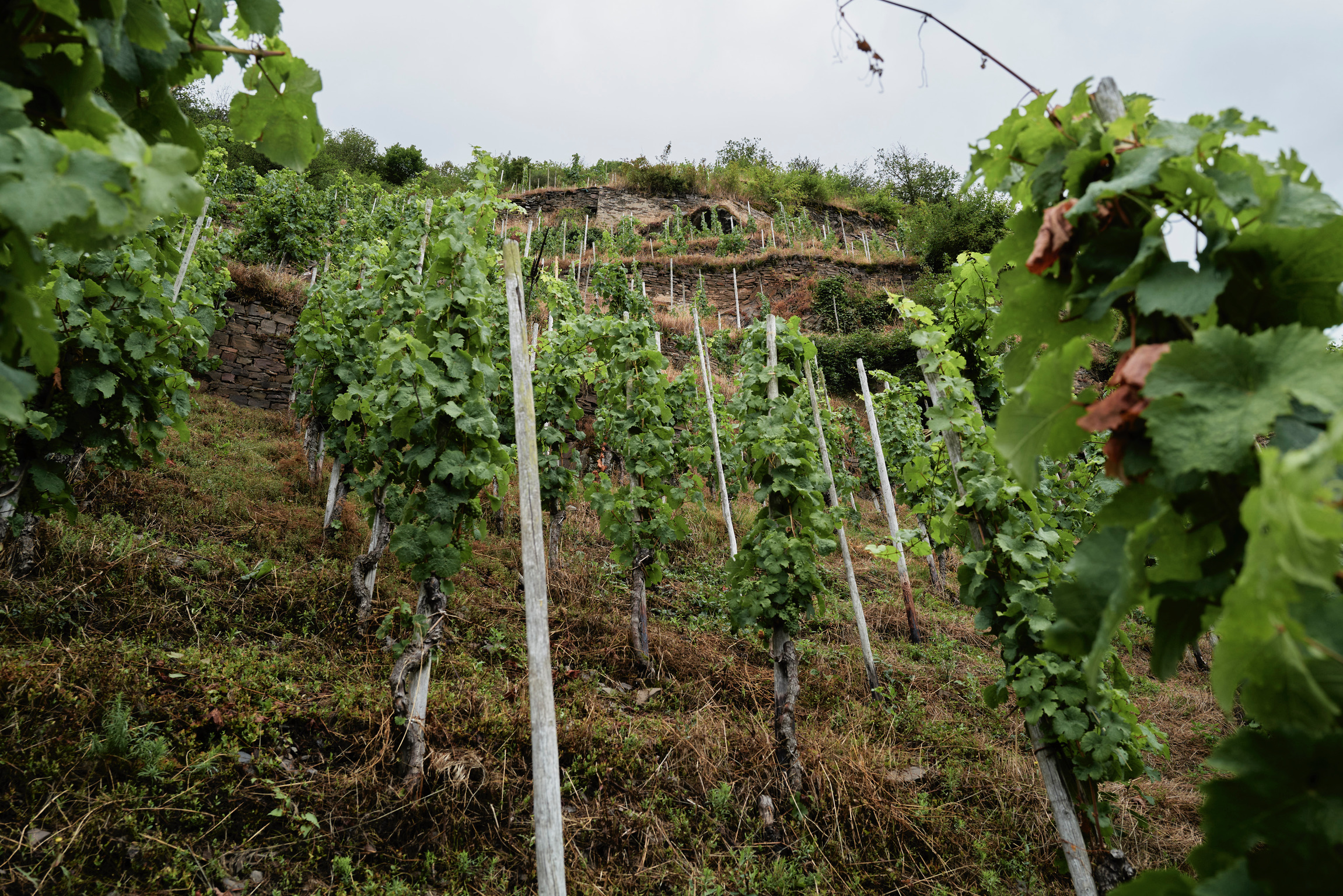
Ulli specializes in the absurd and the sublime. He farms meaningful parcels of land (like the awesome Palmberg-Terrassen, photographed above) that have a few important things in common: They are not easy to work. They are commercially unknown and therefore (most likely) barely financially viable. Finally, and most importantly: Ulli has to love them.
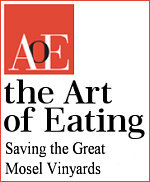 In fact, as alluded to by Schildknecht’s quote above, Stein is more than a winemaker – he is a passionate advocate for the traditional, steep, slate vineyards of the Mosel. In 2010 Ulli published a manifesto warning of the threats to the region’s 2000-year-old viticultural tradition. Dan Melia wrote a beautiful summary of Stein’s manifesto for Edward Behr’s The Art of Eating. The article is reproduced in full, with the kind permission of Edward Behr and Dan Melia: please click the link to the right.
In fact, as alluded to by Schildknecht’s quote above, Stein is more than a winemaker – he is a passionate advocate for the traditional, steep, slate vineyards of the Mosel. In 2010 Ulli published a manifesto warning of the threats to the region’s 2000-year-old viticultural tradition. Dan Melia wrote a beautiful summary of Stein’s manifesto for Edward Behr’s The Art of Eating. The article is reproduced in full, with the kind permission of Edward Behr and Dan Melia: please click the link to the right.
To some extent perhaps Ulli’s manifesto struck a chord somewhere. Or, maybe more likely, the magic of the Mosel simply cannot be denied. It is not for everyone, this is certain; but this fact is part and parcel of why it is truly so magical. Regardless, it is impossible to deny the inexplicable situation here: a veritable cornucopia of Grand Cru sites, riddled in history, one of the last remaining regions with a plethora of ungrafted vines, an invaluable connection to a genetic history that is disappearing. And all this for cents on the dollar. The only catch? You have to work your *** off.
Yet in the past ten years a young generation of growers have come to the Mosel. They are investing their blood, sweat and tears. They are in many ways saving the Mosel.
There is no denying Stein has been an inspiration: where many have gone to the flatlands, or for the steep vineyards that can be mechanized, Stein has gone to the terraces. There are no machines that can work these vineyards. There can only be a human, on her or his feet.
There are three key vineyards for Stein (though please take the Google Earth tour below where we go through everything). At the center of everything is the Palmberg-Terrassen, a terraced vineyard full of ungrafted vines 100 years and older. The “baby” Grand Cru is a site just downstream, the Himmelreich of St. Aldegund; this site is deceptively steep, awash in blue slate with tiny terraces at the upper reaches. See the photograph below. Finally, there is the “1900” vineyard; this is the second-oldest producing vineyard of the Mosel, planted with ungrafted vines from the year 1900. This is one of the great wines of the Mosel.
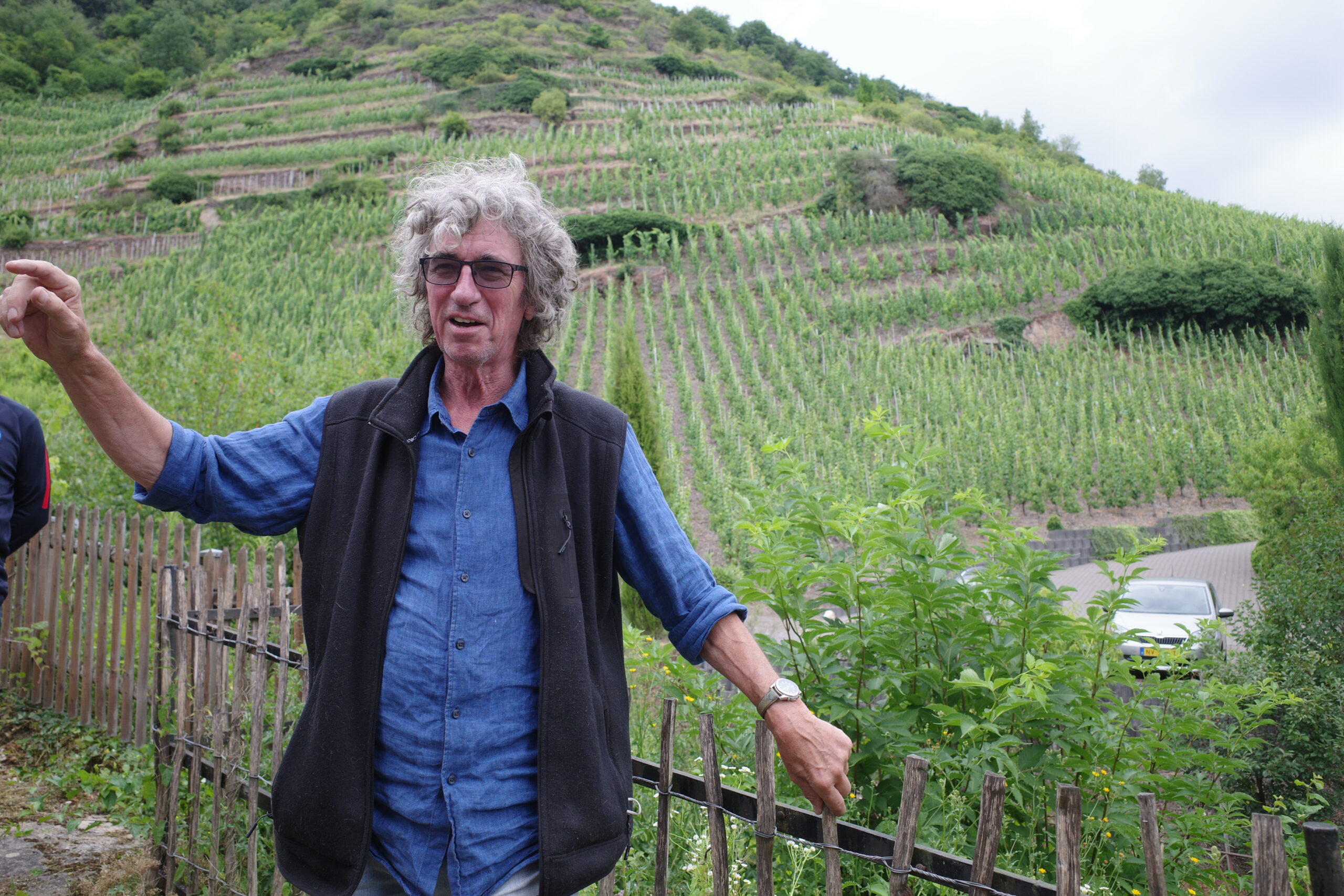 It’s perhaps difficult to speak of an overarching “style” at Stein; or maybe it’s that the word, the concept, just doesn’t feel right. Winemaking with Ulli is refreshingly light on “style;” on some idea projected into the vineyards, and more about what the vineyards say to him. Certainly there is a focus on wines that are dry; lightness and zip are more important than gobs of fruit. Complexity is good, but not at the expense of the whole – better to be simple and well done than overdone and, well, a mess. Cut is more important than size. In this regard, Stein has rarely made Auslesen. “If I say I value racy wines, why would I make an Auslese?” says Stein. In general, one finds Kabinetts the focus of the estate up to delicate off-dry Spätlesen if the vintage allows it. And just to confirm you all even more, some of the best Pinot Noirs and without a doubt the best Cabernet Sauvignon from the Mosel come from this cellar.
It’s perhaps difficult to speak of an overarching “style” at Stein; or maybe it’s that the word, the concept, just doesn’t feel right. Winemaking with Ulli is refreshingly light on “style;” on some idea projected into the vineyards, and more about what the vineyards say to him. Certainly there is a focus on wines that are dry; lightness and zip are more important than gobs of fruit. Complexity is good, but not at the expense of the whole – better to be simple and well done than overdone and, well, a mess. Cut is more important than size. In this regard, Stein has rarely made Auslesen. “If I say I value racy wines, why would I make an Auslese?” says Stein. In general, one finds Kabinetts the focus of the estate up to delicate off-dry Spätlesen if the vintage allows it. And just to confirm you all even more, some of the best Pinot Noirs and without a doubt the best Cabernet Sauvignon from the Mosel come from this cellar.
But the point of it all is unquestioned: A happy vineyard, a happy winemaker, a happy customer, a good bottle of wine, and laughing.
We begin from a wide view of the entire Mosel, looking directly down before we move to what we call the “Hollywood Mile” including the villages of Bernkastel, Graach, Wehlen, Zeltingen and then Ürzig and Erden at the end. With the next slide we fly over two hair-pin turns, the first one at Traben-Trarbach and the next turn brings us to Stein. You’ll note this wide-angle view shows us the background of Alf (the village where Ulli lives) but also Pünderich, where Clemens Busch lives. Curiously, from Stein’s hotel on the mountaintop, it’s only a five minute walk to the top of Clemens Busch’s vineyards in the Marienburg it’s a 20-minute drive to the village of Pünderich.
Slide four spins us around the turn of the river and take a look at Stein’s home, the 19th century hotel called “Haus Waldfrieden.” Slide five shows us the larger parcel of the Alfer Hölle. This Hölle site has iron-rich clay soils with lower amounts of weathered slate. The Riesling vines are younger (around forty years old); the site also has twenty-year-old Cabernet Sauvignon vines. Slide six takes us to the historic “1900” parcel of the Alfer Hölle; this is the second-oldest producing Riesling vineyard in the Mosel with just over 1,000 vines planted in the year 1900. This is a vineyard Ulli Stein tends like a garden; he has been working this sacred historical vineyard since 2011.
While Ulli has lived in the village of Alf since the 1980’s, he was born in the next village downstream—St. Aldegund—where the majority of Stein’s vineyards are. With slide seven we begin at the Klosterkammer vineyard. Weihwasser is made mostly from vines in this site; it is a south-eastern facing vineyard with earth-rich clay and a grey slate subsoil. The vines here are nearly all ungrafted and roughly fifty years old. Additionally, small parcels of Cabernet Sauvignon, as well as young-vine Pinot Noir and Rosa Chardonnay — which are not yet producing — are planted. Many Ohne and other one-off wines came from this site until the 2016 vintage. The name Klosterkammer means Monastery Chamber, referring to the old Roman Church—Alte Dorfkirche St.Aldegund—which dates back to 1144.
With slide nine we arrive at Stein’s Palmberg-Terrassen. This is a vineyard to measure against any other vineyard in the Mosel, period. It is an awesome site, an ancient wall of south-facing terraces tucked into a cool side valley and is an unbelievable treasure trove of history; the site is mostly filled with ungrafted vines over 90-100+ years old. This is where Ulli’s top wines come from — in most years Stein can make both a Kabinett Trocken or a Spätlese Trocken. Both could be compared to the Grand Cru dry wines known as “GGs.”
Finally we come to Himmelreich on the northern edge of the village. Consider this Stein’s “1er Cru” vineyard; though it’s a 1er Cru vineyard with 80+ year-old ungrafted vines and a serious terroir of mostly blue slate. This is the “other” Himmelreich and similar to its more famous sibling in Graach; the wines from this site always show a slimmer profile, a pronounced mineral fine-ness and lift. In addition to Riesling there is also Pinot Noir, Cabernet Sauvignon and Merlot planted in the steep terraces.
Finally, the video below was made by our friend @ravingcave; we hope to have an updated video soon.
